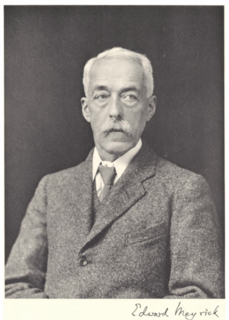Related Research Articles

Cambridge is a university city and the county town of Cambridgeshire, England, on the River Cam approximately 55 miles (89 km) north of London. At the United Kingdom Census 2011, the population of the Cambridge built-up area was 158,434 including 29,327 students. Cambridge became an important trading centre during the Roman and Viking ages, and there is archaeological evidence of settlement in the area as early as the Bronze Age. The first town charters were granted in the 12th century, although modern city status was not officially conferred until 1951.

The Lewis chessmen or Uig chessmen, named after the island or the bay where they were found, are a group of distinctive 12th-century chess pieces, along with other game pieces, most of which are carved from walrus ivory. Discovered in 1831 on Lewis in the Outer Hebrides of Scotland, they may constitute some of the few complete, surviving medieval chess sets, although it is not clear if a set as originally made can be assembled from the pieces. When found, the hoard contained 93 artifacts: 78 chess pieces, 14 tablemen and one belt buckle. Today, 82 pieces are owned and usually exhibited by the British Museum in London, and the remaining 11 are at the National Museum of Scotland in Edinburgh.

Dame Jocelyn Barbara Hepworth was an English artist and sculptor. Her work exemplifies Modernism and in particular modern sculpture. Along with artists such as Ben Nicholson and Naum Gabo, Hepworth was a leading figure in the colony of artists who resided in St Ives during the First and Second World Wars.

Percy Wyndham Lewis was an English writer, painter, and critic. He was a co-founder of the Vorticist movement in art and edited BLAST, the literary magazine of the Vorticists.

Triangular trade or triangle trade is a historical term indicating trade among three ports or regions. Triangular trade usually evolves when a region has export commodities that are not required in the region from which its major imports come. Triangular trade thus provides a method for rectifying trade imbalances between the above regions.
Reginald Stuart Poole, known as Stuart Poole, was an English archaeologist, numismatist and Orientalist. Poole was from a famous Orientalist family as his mother Sophia Lane Poole, his uncle Edward William Lane and his nephew Stanley Lane-Poole famous for their work in this field. His other uncle was Richard James Lane, a distinguished Victorian lithographer and engraver.

Edward Meyrick FRS was an English schoolmaster and amateur entomologist. He was an expert on microlepidoptera and some consider him one of the founders of modern microlepidoptera systematics.
Claud Buchanan Ticehurst FRGS was a British ornithologist.

Thomas de Grey, 6th Baron Walsingham, of Merton Hall, Norfolk, was an English politician and amateur entomologist.

John Lewis James Bonhote M.A., F.L.S., F.Z.S., M.B.O.U. was an English zoologist, ornithologist and writer.

Sir Arthur Everett Shipley GBE FRS was an English zoologist and Vice-Chancellor of the University of Cambridge.

The Bruneian Empire or Empire of Brunei, also known as Sultanate of Brunei, was a Malay sultanate, centred in Brunei on the northern coast of Borneo island in Southeast Asia. Bruneian rulers converted to Islam around the 15th century, when it grew substantially since the fall of Malacca to the Portuguese, extending throughout coastal areas of Borneo and the Philippines, before it declined in the 17th and 18th centuries.
William James Lewis F.R.S. was a Welsh mineralogist.
Michael Willis is an Indologist and historian based in London, England.
The Right Reverend Thomas Lewis O'Beirne, was an Anglican bishop, Bishop of Ossory from 1795 to 1798 when he was translated to Meath.
William Warren was an English entomologist who specialised in Lepidoptera.

The Bronze Head from Ife, or Ife Head, is one of eighteen copper alloy sculptures that were unearthed in 1938 at Ife in Nigeria, the religious and former royal centre of the Yoruba people. It is believed to represent a king. It was probably made in the fourteenth-fifteenth century C.E.. The realism and sophisticated craftsmanship of the objects challenged Western conceptions of African art. The naturalistic features of the Ife heads are unique in Africa, and today are seen as the highest achievement of African art and culture. The stylistic similarities of the Ife heads "suggest that they were made by an individual artist or in a single workshop."
Nicholas Deane was Archdeacon of Carlisle from 1602 until his resignation in 1604.
Cuthbert Conyers, DCL was Archdeacon of Carlisle from 1510 until 1520.
References
- ↑ "Catalogue of the Lansdowne Manuscripts in the British Museum" London, British Museum, 1819
- ↑ "West, Lewis (WST672L)". A Cambridge Alumni Database. University of Cambridge.
- ↑ Clergy of the Church of England Database